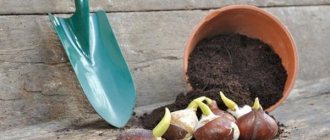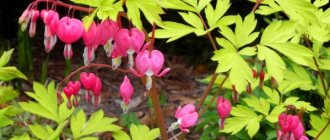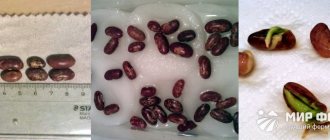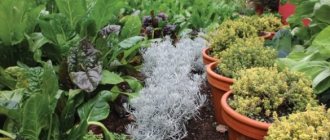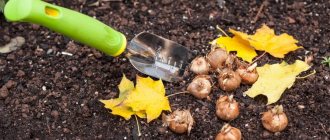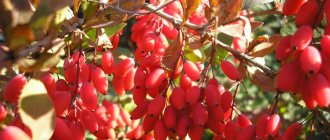1
3624
Owners of garden plots annually strive to transform their plots. Ornamental shrubs, perennial and annual flowers are used. To make your own work easier, speed up the opening of buds in the spring and protect yourself from worries about seedlings, you need to find out which flowers are planted in the fall before winter, and in what sequence this work is carried out.
Hardened flower seeds produce strong shoots
When to sow flowers before winter
Only cold-resistant annuals are suitable for autumn sowing. The main condition for such planting is freezing of the top layer of soil. If you sow in warm soil, seedlings may soon appear, which will then die from frost. In this case, sowing must be plentiful due to the fact that some of the seeds will certainly die. The soil should be prepared in advance, in September. They dig it up, apply fertilizer and cut furrows.
On a note! For small seeds, the groove should be 1 cm deep, for larger ones - 3-5 cm.
You should start directly sowing at the end of November or beginning of December, when the ground is completely frozen. The seeds are sown in furrows and covered on top with a mixture of peat or humus and sand.
You can plant annuals at the beginning of winter. In this case, the seeds are planted directly in the snow, with a snow cover thickness of 20-25 cm. This can be done from mid-December to the first days of January. The snow mass is compacted with feet, seeds are laid out on top in rows, or in the form of a geometric pattern, covered with a layer of sand and peat, and then covered with snow, which will act as a fluffy warm blanket.
Advice! To prevent seed material from becoming prey for rodents, the snow mass is compacted from the sides around the perimeter and from above.
Bulbous flowers for planting in autumn - names, photos
September - October is the time to plant bulbs and rhizomes of perennial flowers.
Tulips
Bulbous plants with simple or terry glasses can have a wide variety of colors. There are varieties with multi-colored flowers.
Planting is done in the fall in the last ten days of September - the first ten days of October.
Muscari or mouse hyacinth
The pyramid-shaped inflorescences consist of bell flowers, which can be pink, blue, light blue, or white. Plant height is about 20 cm.
You will be interested to know: Celosia: the secrets of growing from seeds, when and how to plant seedlings
Planting in early September.
Hyacinth
Large dense white, pink or even blue inflorescences of hyacinths are formed in a rosette of leaves and can reach a height of 25 cm.
Bulbs have been planted since mid-September.
Daffodils
Delicate yellow or white daffodil are produced on plants that range from 30 to 50 cm in height.
Planting time in autumn: end of August - first ten days of September.
Crocuses
crocus bush up to 15 cm high will bloom in late spring with numerous delicate pink or white small flowers. There are fall flowering varieties.
Before winter they are planted in late August - early September.
Allium or decorative onion
An unusual plant up to 80 cm high with spherical flowers of various colors.
Depending on weather conditions, planting is carried out in September - October.
Irises
Plants with rhizomes may have bearded or beardless flowers. The colors of the buds can be very diverse.
Time for planting: September – October.
What flowers can be planted before winter
Not all crops are suitable for winter planting. However, their list is quite wide. If you see your favorite plants in it that you have never tried to plant in the fall, experiment. Moreover, a gardener has a lot of free time in the autumn and winter months.
Annuals
You have to tinker with perennial seeds in the spring. Many of them require stratification. To do this, the seed material is kept in the refrigerator. Winter sowing also solves this problem. Stratification in this case occurs naturally. The following crops are recommended for sowing in late autumn or early winter:
- aquilegia;
- marine alyssum;
- Chinese aster;
- summer adonis;
- buzulnik;
- annual cornflower;
- godetia grandiflora;
- Iberis bitter;
- delphinium Ajax;
- decorative bow;
- dimorphotheca;
- Chinese cloves;
- chrysanthemum keeled;
- calendula officinalis;
- Clarkia marigold;
- cosmos doubly pinnate;
- collinsia varifolia;
- Lavatera three months;
- malcolmia maritima;
- marin root;
- matthiola bicornuum;
- self-seeding poppy,
- nigella sativa;
- fragrant mignonette;
- scabiosa dark purple;
- fragrant tobacco;
- Snapdragon;
- Drummond's phlox;
- Eschscholzia.
It doesn’t matter whether you bought the seeds in a store or collected them on your own plot. It is better if they are as fresh as possible. Long-term storage of seed material often reduces germination by half or more. When purchasing, give preference to specialized stores and garden centers; they have trusted suppliers who monitor the quality of their products.
Eschszolzia
This plant with a thin stem and delicate yellow-orange petals, reminiscent of a poppy (and for good reason, since it is its close relative and is even sometimes called the “California poppy”), despite its external fragility, is also an excellent candidate for winter sowing in our latitudes.
Eschscholzia forms branched, creeping or compact bushes 45-50 cm high. Unlike the original species, varietal plants can have not only orange, but pink and red flowers, and also have double forms. Eschscholzia is easy to grow, light-loving, cold-resistant, and grows well even on dry, sandy, poor soils.
- 13 rock plants that bloom from spring to fall
Plants for alpine hills and rock gardens, blooming all season long.
Perennial
Among the perennials there are also flowers for which autumn planting is favorable. It is with winter sowing that it will be possible to obtain strong, healthy plants with strong immunity. Even those crops that usually bloom in the second year can produce buds in the first summer. Here is a list of those perennials that tolerate sowing well before winter:
- aquilegia;
- arabesque;
- gaillardia;
- heuchera;
- gypsophila;
- gentian;
- doronicum;
- Carpathian bell;
- lavender;
- hellebore;
- nasturtium;
- aubrieta;
- yarrow.
If you follow the timing and planting technology, the seeds will successfully overwinter in the soil and begin to grow in the spring. In summer, all you can do is admire the beautiful flowers decorating your garden.
Benefits of autumn planting
Planting flowers before winter has the following undeniable advantages:
- Planting material undergoes stratification under optimal conditions, which are not always possible to create at home.
- Hardened flower seeds produce strong seedlings that are resistant to diseases and unexpected temperature changes in early spring, which cannot be said about many greenhouse specimens.
- The buds of winter plants bloom much earlier than similar varieties planted in spring. For annuals and bulbous plants, the flowering period shifts by 2-3 weeks, and perennials throw out buds already in the first year of planting.
- Perennial plants that have been planted in cool soil will not require annual replanting in the future. The landing site will have to be updated no more than once every 2 or 3 years.
- Bulbs that are planted before winter have time to develop a root system, and in the spring they can easily extract nutrients and water from the soil.
- In winter and spring you will not need to process the seeds and care for the seedlings at home.
Are there any disadvantages to autumn planting? Only one. It will be necessary to plant 30% more seeds in the soil compared to spring sowing, but the financial costs will be compensated a hundredfold by the selected material obtained. In addition, if winter planting is practiced over several seasons, you can count on the improvement of the variety.
Sowing technology
Each summer resident sows crops in his own way. Those who do not want to replant flowers once again immediately sow the seeds in a permanent place. Others build a temporary school for them and only then move them to a flowerbed. In any case, you must first start preparing the land, and with the onset of suitable weather, sowing is already carried out.
In the case when the place for the flower garden has not yet been determined, you need to choose for sowing any free area located on a hill so that in the spring the seeds are not washed away by melt water. Beds for winter sowing should be high or fenced around the perimeter with boards. If seeds of different plants are planted in a school, it is better to divide the area into zones, each of which should be marked with a sign with the name of the type and variety of flowers.
Advice! You can use plywood, slate, polycarbonate, or border tape as dividers.
Land preparation
In September, while the ground is still warm and pliable, choose a warm, clear day to prepare the area for sowing. You need to dig up the soil and remove all the roots of weeds from it. Simultaneously with digging, the nutrient mixture is added. As fertilizers, 40 g of superphosphate and the same amount of potassium sulfate, as well as 20 g of ammonium nitrate are used for each square meter.
The components are mixed together and a little dry sand is added, and then this mixture is scattered over the surface of the soil. From organic fertilizers, you can add humus and rotted manure. Organic matter should not be fresh, otherwise the roots of the plants will suffer and flowering will be poor. After the soil is prepared, furrows of the required size are immediately made in it. Now all that remains is to wait for stable frosts and start sowing.
Sowing
If you plan to sow directly into a flower bed, you need to have a flowering calendar in front of your eyes in order to correctly compose the composition. Crops with different dates for the appearance of buds will provide the flower garden with a bright and fresh look over a long period of time. Also consider the height of the plants so that they do not block each other. Tall varieties should be sown in the center of the flower bed, and low-growing flowers along the perimeter.
The furrows are densely sown with seeds, taking into account the fact that part of the seed material will die. Even if the crops sprout too often in the spring, it’s okay. They can be thinned out at the stage of appearance of 2 true leaves. Don't embed them too deeply. In the spring, the soil compacted over the winter will cover the flowerbed with a dense crust and it will be difficult for tender shoots to break through it.
The smaller the seeds, the closer they should be to the surface. If you do not follow this rule, you will have to wait longer for seedlings. After sowing the seeds, they are sprinkled on top with a mixture of sand and humus or peat, compost. There is no need to water the plantings. In winter, plant embryos will be dormant. In the spring, they will have enough moisture from the melting snow to germinate.
Autumn care, preparation for winter
Since the seeds will remain in suspended animation after sowing until spring, they do not need any special care. After you have sprinkled the grooves with seed material with a layer of soil, throw fallen leaves on top, and to prevent them from being blown away by the wind, cover the top of the flowerbed with spruce branches. By the way, prickly spruce paws hold snow perfectly. The crops will not need denser shelter for the winter. On the contrary, they must undergo natural stratification.
On a note! In the spring, after the snow melts, it is recommended to cover the flowerbed with film to retain moisture so that the seeds do not dry out. As soon as the shoots appear, the shelter is removed.
What to plant in the fall at the dacha
Seeds sown in autumn enable plants to bloom one to two weeks earlier. In addition, in the spring there will be less hassle with seedlings. It is better to plant the seeds in the flowerbed immediately and not replant later. In the fall, any seeds are sown more densely, taking into account the fact that not all seedlings will survive. If the plants grow too densely in the spring, they can be thinned out.
As for perennial plants, it is in any case better to sow them in the fall. Seed germination of many species of perennials requires cold stratification . Plants that require stratification include primrose, lavender, delphinium and others. Most spring-sown perennials will bloom the following year. If you plant perennial seeds in the fall and cover them with film in the spring, then very often the plants bloom by the end of summer.
Useful tips for flower growers
Pre-winter sowing makes it possible to determine the quality of the seed material. If seedlings turn out to be too rare in winter, you can always buy additional seeds and grow additional plants from them using spring sowing. Here's what else you can do to ensure that winter sowing of annual and perennial crops fully pays off:
- It is better to sow most annuals immediately into a flowerbed, removing excess shoots in the spring, since they are sensitive to transplantation, and it can delay their flowering.
- It is better to grow asters on a tree, covering them with film in the spring, and then transplant them to a permanent place.
- If immediately after the snow melts, you install metal arches over the flowerbed and cover them with film, flowering can be achieved even earlier by 1-2 weeks.
- During spring diving, it is necessary to maintain the distance between seedlings recommended for this crop. If the planting is too dense, the plants may become sick and bloom worse.
- When planting perennial asters in a flowerbed, keep in mind that tulips, gladioli and carnations are not recommended as predecessors for these flowers. But they can be safely planted after tagetis and calendula.
- When choosing a composition, consider the moisture needs of the plant. Flowers that require abundant watering and those that prefer drought should not grow nearby. Plants in a flower garden should also be compatible in color.
- You can sow flowers in winter in separate containers, which are then buried in the soil. This method replaces the use of shkolka and protects the seeds from being washed away by melt water. Later you can replant these plants wherever you want. The holes for the pots should also be prepared in advance; they must be of the appropriate size.
What to plant in the fall
How to decide what to plant in open ground in the garden when the choice is quite wide. First of all, you need to plant small-bulbous garden crops : crocuses, scylla, pushkinia, freesia, lilies of the valley, hazel grouse . Towards the end of September you can plant lilies, daffodils, amaryllis, tulips, irises, hyacinths . You should not plant all the bulbous plants at the same time; the rule here is that the smaller the bulb, the sooner the replanting should be completed.
The depth at which bulbous crops are planted should correspond to two diameters of their bulb. If the weather is dry, the plants must be watered after planting. Bulb crops are planted in open ground in the fall, taking into account that the above-zero temperature will last another three weeks after transplantation, otherwise bulbs of such flowers should not be planted in open ground before winter, they will freeze.
Godetia
The shape of the flower is either an azalea or a wide-open bell - but no, this is what godetia, a herbaceous annual of the fireweed family, looks like. It has thin but strong stems up to 50 cm high and simple bluish-green leaves, and flowers with delicate petals delight with the richness of their colors - pink, white, orange, red violet...
This plant is profusely flowering, unpretentious, tolerates frosts and sudden temperature changes well, but does not like waterlogging. To plant godetia, choose sunny places and fertile soils.
- Flowers that are not afraid of autumn frosts
What plants will decorate a flower garden in late autumn and not die during the first frost?
